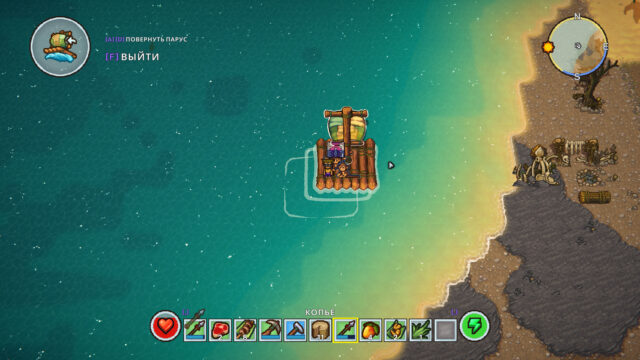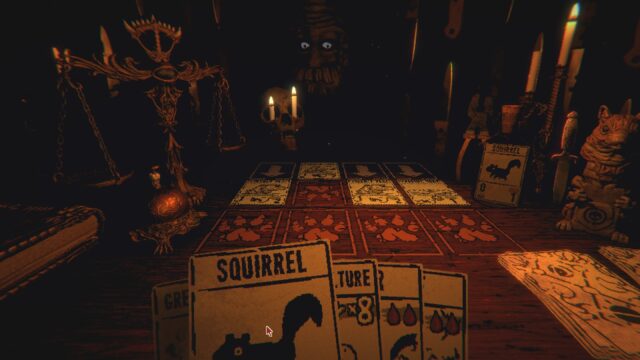Octopath Traveler Review. If You Set Out with a Friend...
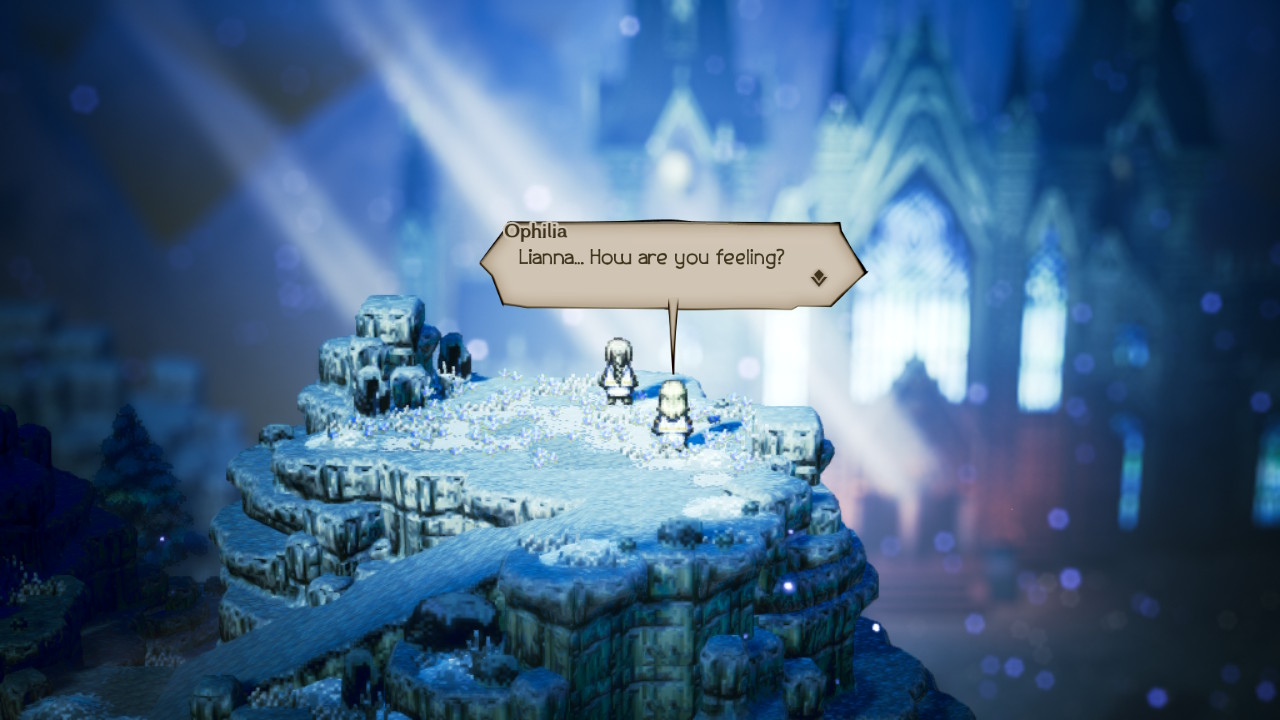
Like many owners Switch, I was mesmerized watching every step of Octopath Traveler towards its release. Not because I am particularly concerned about Square Enix’s retro aspirations, as they desperately try to turn back the progress of Japanese RPGs. Nostalgia is great, of course, it’s trendy, it appeals to a large audience of people hopelessly stuck in the 90s, but it has nothing to do with this. If it were otherwise, the game we praised so much would I am Setsuna. And the following Lost Sphear wouldn’t settle at the bottom of my library after a couple of introductory evenings.
What really caught my attention was something else. Octopath wanted to become not just a classic fantasy, but a classic fantasy with eight different storylines that can be played in any order, by anyone, at any time, intertwining with each other and so on. No doubt about it, it’s a non-linear role-playing masterpiece.
Technically speaking, well… It’s all true. Eight travelers, each of them a potential main character with their own story, a vast open world, no deception. They really did implement a grandiose idea, just not exactly as it was initially imagined.
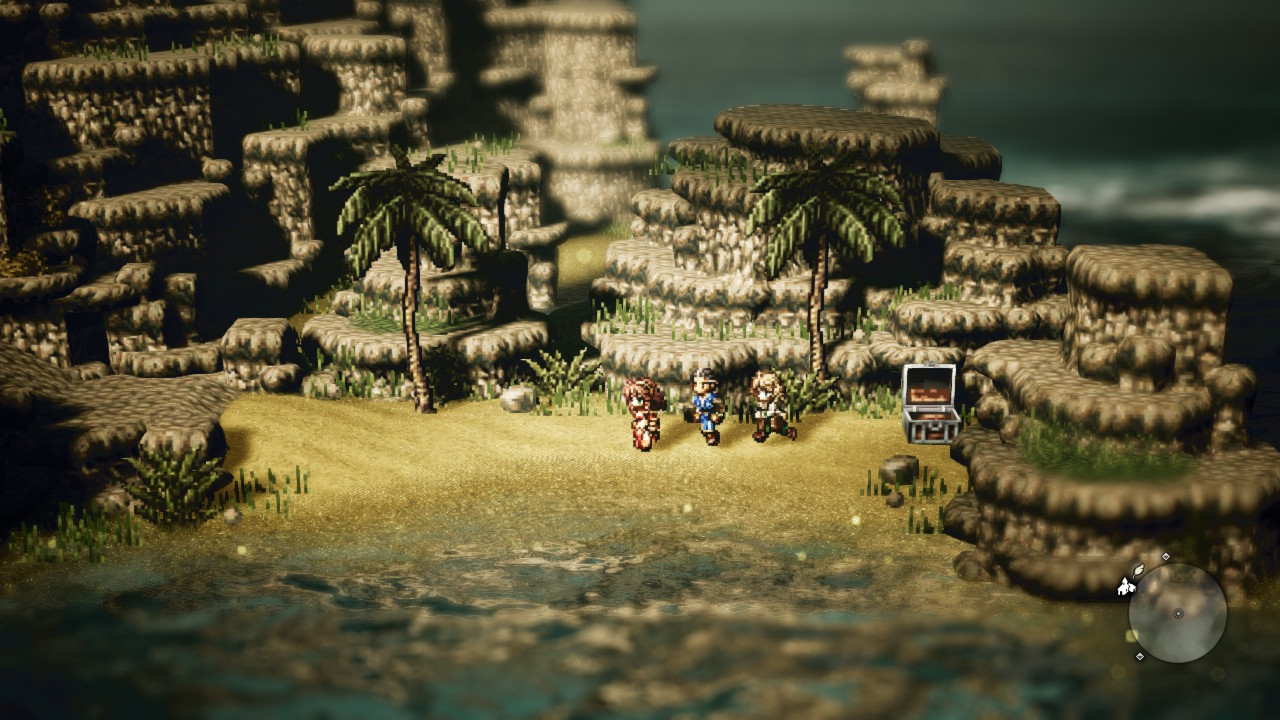
The heaviest surprise below the belt awaits those who hoped to choose a character to their liking and quickly run through their entire story arc without being distracted by any nonsense. You see, rosy-cheeked travelers, the narrative here is strictly portioned. After a short prologue that introduces the situation, problems, and motivations, it abruptly veers off somewhere beyond the horizon and politely hints that rushing to the next chapter is not advisable – there won’t be enough strength. First, it says, go and level up a bit, and then we’ll talk.
Here it should be clarified what “a bit” means in the understanding of an old-school JRPG. If the newly minted hero doesn’t linger anywhere, they will be at best level six or seven when exiting the starting dungeon. The recommended level to continue the feast, however, is twenty-five. In theory, of course, there is an option to rush headlong, but a meeting with the first competent bug will ruin the whole endeavor. You can’t really go against sobering four-digit blows.
So it turns out that the plot simply stops, barely even starting, and a huge abyss appears on the way to it. What, one wonders, should fill it?
Octopath Traveler, being a non-linear game, offers two answers to this question right away. You can spend the whole weekend passionately grinding on the nearby outskirts and subsequently find out that you still won’t be able to handle it alone. Or you can do it differently and set out to gather all the comrades on the map, rejected by us on the initial screen. I admit that the choice was not an easy one, but the second option won with a slight advantage. Oh, the decisions!
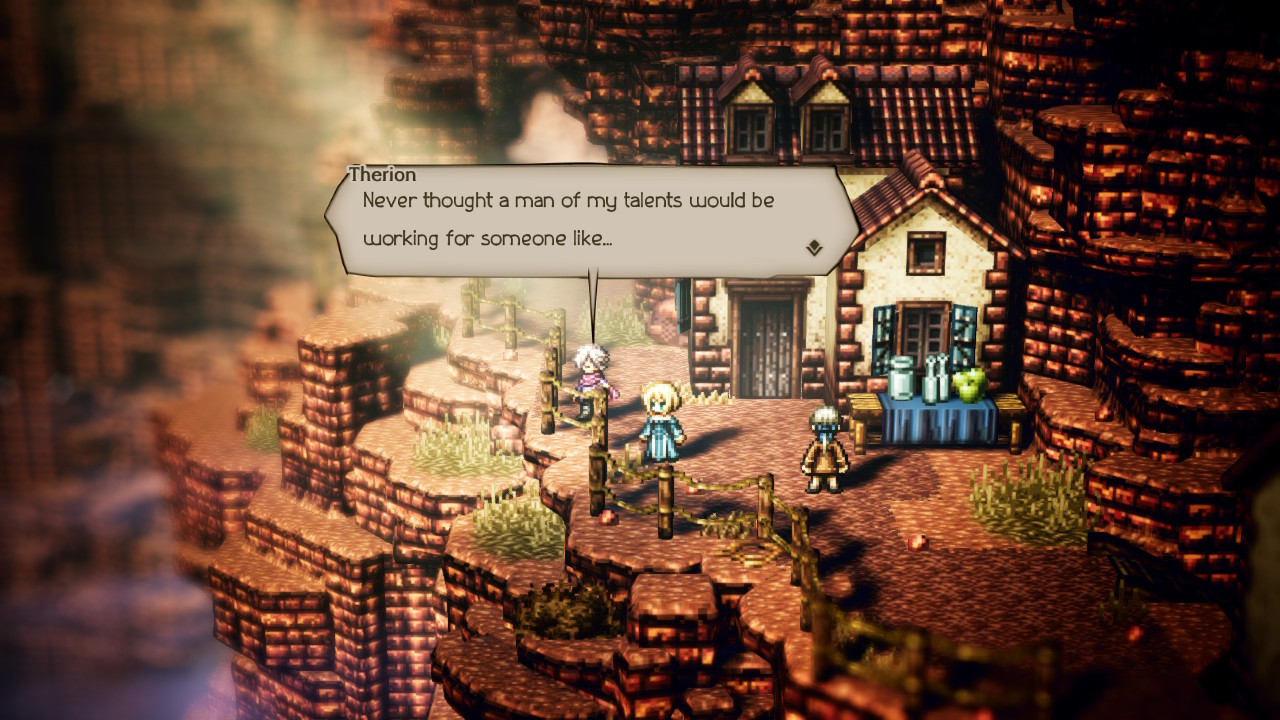
The snag is that the other plotlines haven’t disappeared anywhere, and they also have to be activated in order to gain the support of other characters. And who would have thought, they follow exactly the same rules as the main one, so at a certain point you have eight fascinating series in your hands, none of which can be watched beyond the pilot episode.
For whom and why it was done this way, I still don’t understand. Not only the rhythm of the narrative suffers from such a structure, but also its logic: the game refuses to tell coherent stories and forces you to scatter across all the content at once, taking a piece from each pie. Not that the pies are anything special – on the contrary, they are the most ordinary pies, of which there are thousands. And yet they are good enough to be tasted separately and without unnecessary obstacles. Preferably – in one sitting.
Nevertheless, the authors did everything possible to break down the dish to the maximum. It is doubly regrettable that partly their approach could have been justified by the notorious connection of the plots. Going far ahead, it is worth saying that in a global sense they do intertwine, but in the specific game realities, the interaction of the characters is exhausted by the fact of their joint journey.
For example, the dancer Primrose is obsessed with the idea of avenging her father, and in this wonderful endeavor, she has her own tasks, helpers, and antagonists. Her fellow party members are not involved in the heroine’s personal adventure at all and appear strictly as cannon fodder when someone needs to be beaten up. The utmost degree of their involvement is to pull you into a backstage smoking room once or twice and discuss current events.

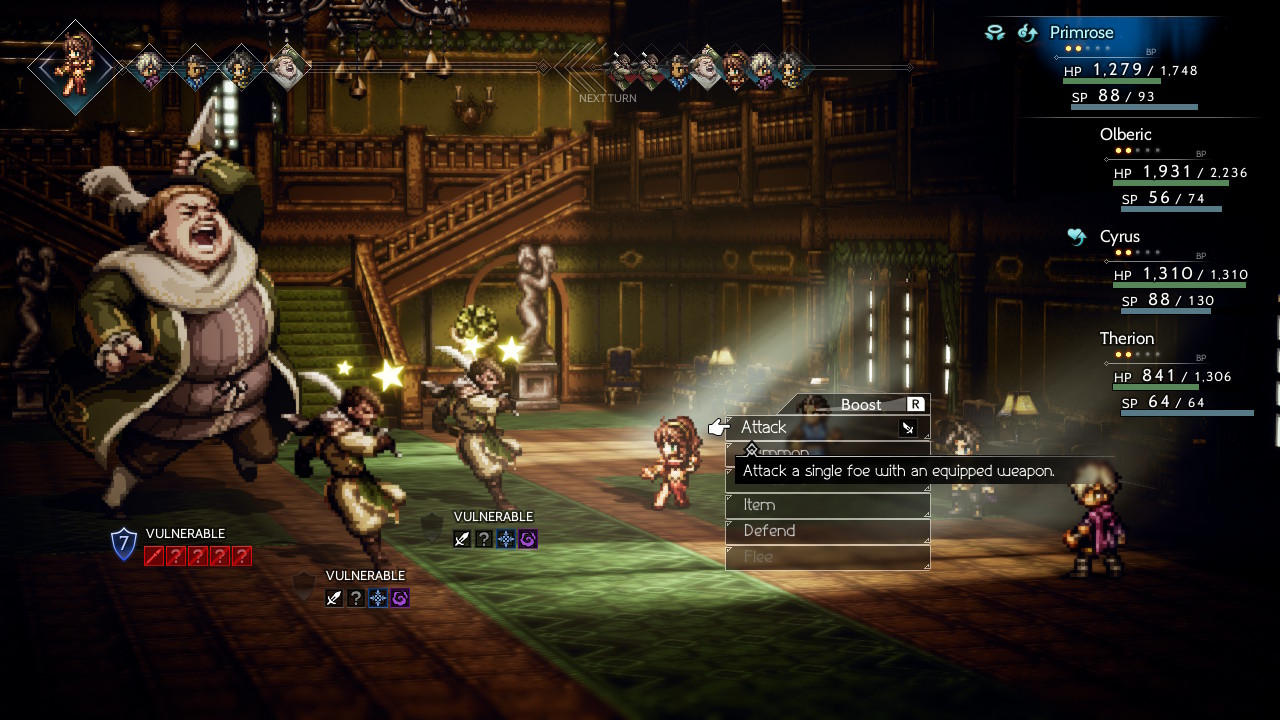
On the other hand, none of the gang of protagonists have any reason to stick their noses into other people’s business in principle. In this regard, perhaps the biggest convention of Octopath Traveler is that everyone sticks together solely because it’s more convenient for the game. There is no impending global catastrophe, no forces of darkness emerging from underground, no invading armies at the borders – there is no motive explaining why a noble scientist helps a thief and why a young priestess wanders around brothels instead of completing a sacred ritual for her people.
It’s not the end of the world, of course, but in this context, the idea of multi-narrative storytelling doesn’t really justify itself. With the same success, they could have not built their “Fellowship of the Ring” and instead designed the game as a collection of independent stories within the same world. They could have planned the sequence of chapters, added appropriate level scaling, introduced local companions whose presence would make sense in a particular story… And then, if they really wanted to, they could have tied it all together with a beautiful epilogue, post-game content, and grinding to the max.
Especially since it would be foolish to criticize the latter in Octopath – the local combat system is just too good. At its core, it doesn’t differ much from typical turn-based JRPG mechanics, but thanks to a couple of successful touches, it has become much livelier and deeper.
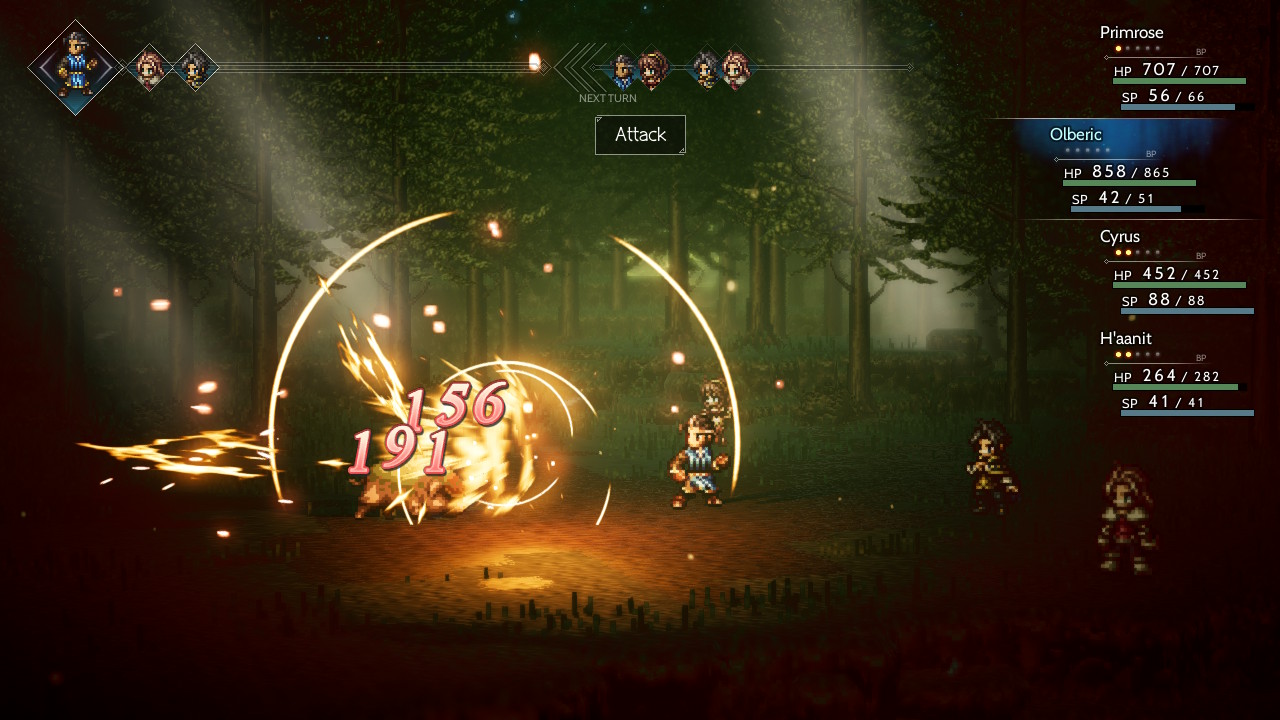
Each opponent here has a whole range of vulnerabilities: someone can’t stand dark magic, another one recoils from fire, the third one has an allergy to daggers in the back, and so on. By striking at these weak points, you remove the enemy’s shield, forcing them to miss their next two turns and exposing them to particularly painful attacks. The catch, however, is that these weak points are unknown in advance, so you have to literally feel them out through trial and error.
This gives the battles a unique taste of tactical puzzle, the conditions of which the game constantly changes. A new enemy is always a little intrigue, and boss fights are seriously engaging because they are no longer just about chipping away 0.01% of health per turn. Naturally, towards the end, the enemies and their combinations start to repeat, which makes fighting less enjoyable, but most of the time, each battle brings genuine pleasure. And this, I remind you, is in a Japanese RPG.
However, it’s not all about combat. Peaceful adventures in towns and the surrounding lands are perhaps the most important part of the leisure here because it is in them that the true potential of Octopath Traveler is revealed.

Dogs also have something to tell you.
The residents of the surrounding area, as is customary among colleagues in the genre, are more than willing to transfer their everyday worries onto us. A brave knight, for example, is afraid to approach the lady of his dreams and tearfully begs for assistance. A sad carpet merchant in the market square will surely complain about the decline in customers. And if you enter the prison, the only inmate there will tell you how he was unjustly imprisoned – honestly! We may not be heroes in the traditional sense, but it seems we are obligated to help people.
Side quests are interesting for two reasons. Firstly, they somehow involve the special abilities of our gang. Where someone needs to be taught a lesson, a warrior who can challenge anyone to an honest duel will come in handy. Need information? The apothecary will extract all the secrets from the interlocutor. Well, and the aforementioned dancer simply uses her, um, charisma and makes the charmed NPC follow her – also useful, you know.
Secondly, side quests have no markers. At all.
In other words, if a hypothetical gardener complains to you that he has nowhere to plant imported super-duper seeds, the game will, of course, notify you of the start of the quest. But where to go to complete it is up to you. Wander around the village, rummage through other people’s chests, ask passersby – and eventually you will come across a farmer who tells everyone about his cow and the excellent pancakes it produces.
How to get these pancakes is another question. If there is a merchant in the party, you can negotiate and purchase them at a reasonable price. But is that too much honor? Call a thief, pickpocket the braggart right out of his pocket – and that’s the end of it!
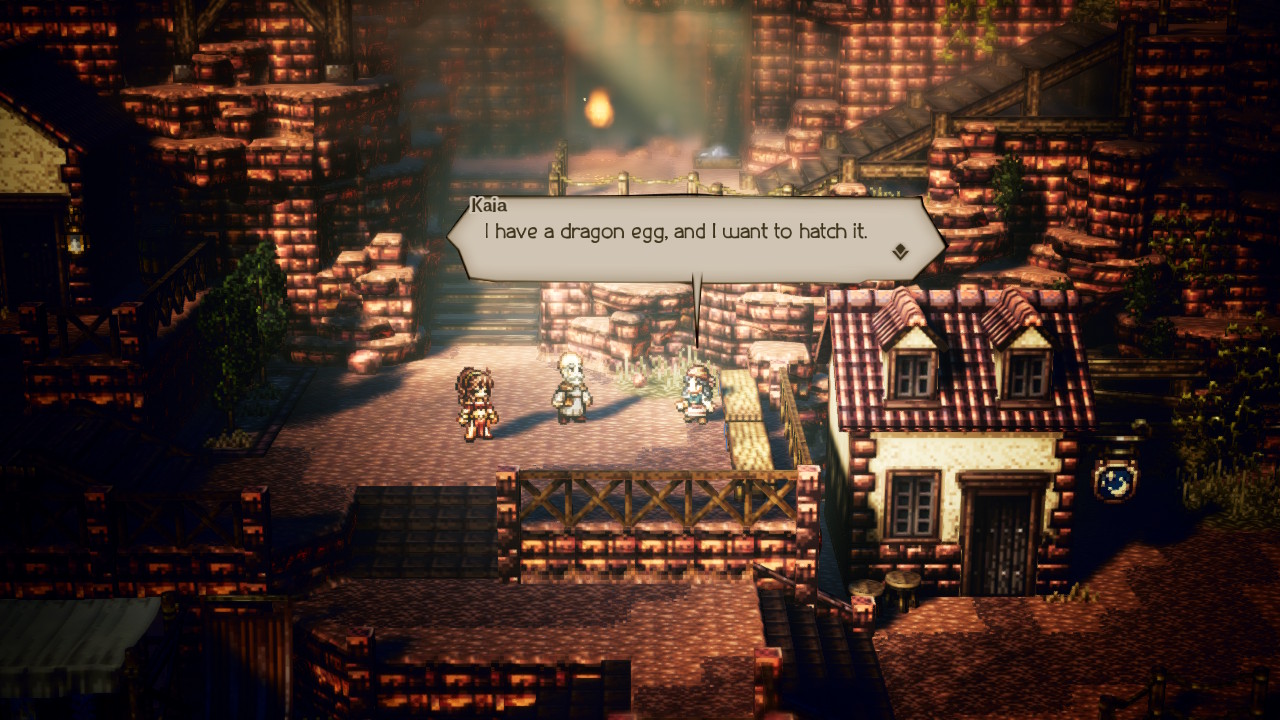
This is just a tiny episode, of which there are dozens here, but such moments stick in the memory the most. Moments when the game simply releases you into its world and allows you to find not only the problem but also its solution on your own. In such conditions, quests – even the smallest ones – are perceived as full-fledged social tasks rather than bland checklists, and that’s great.
The environment is filled with meaningless little things that, when combined, have a stunning effect. Here you can wander the streets for hours, helping those in need, studying the townspeople, clearing their hideouts, then accidentally finding their relatives on the other side of the continent, clearing their relatives’ hideouts… Undoubtedly, this is still a wooden JRPG, where all NPCs just stand and wait for someone to click on them, but practically each one is hiding some kind of story, be it a full-fledged quest or a few interesting facts from their biography.
The abundance of stories in Octopath Traveler partly redeems all the aforementioned flaws and becomes a wonderful adventure. Despite the narrative structure, the overall impression of which can only be described as “?!?!?!??!?!!???????????”, in the end, I spent several days playing the game without interruption, forgetting about sleep, food, and the fact that a review has long been expected from me. This is a world that you want to explore, in which you want to peek into every secret cave, defeat every boss, and finally bring heaps of manure to every gardener – it’s so cozy and good in it.
And also, if you haven’t noticed yet, it is a world of insane beauty. It is difficult to blame those for whom the visual aspect became the deciding factor when purchasing: such a talented symbiosis of retro aesthetics and modern technology has not been seen, perhaps, in any catalog of tired 16-bit indies. It is enough to see how the soft light envelops the flat pixel figures, how shadows from clouds glide over the snowdrifts, and how the camera captures dazzling “bokeh” on the water’s surface to fall in love with the local picture once and for all. It truly knocks you out.
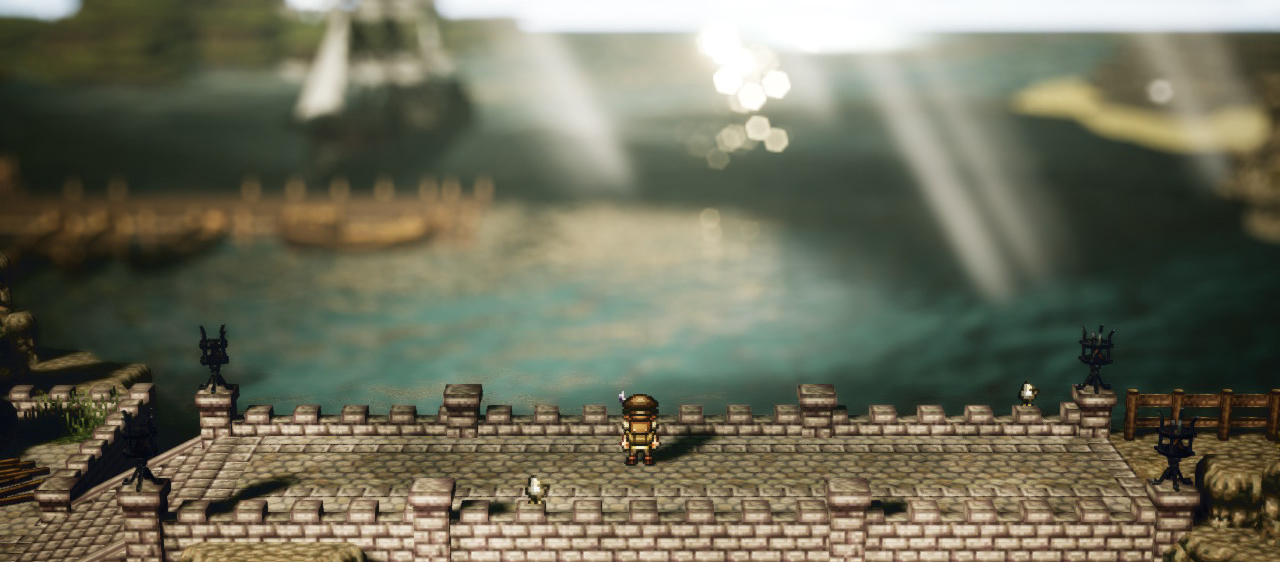
In general, it turned out that there were significantly more problems than benefits from experimenting with narrative in Octopath Traveler. However, it doesn’t harm the game as much as it may seem. It still manages to entertain, surprise, and captivate from beginning to end, which is the most important thing for a role-playing game of its size.
It’s a bit disappointing that we didn’t get a definitive masterpiece, but in recent years, we should have gotten used to this feeling. After all, knowing Square Enix, we won’t have to wait long for their next attempt to do something similar.
Share
Discuss
More Reviews

